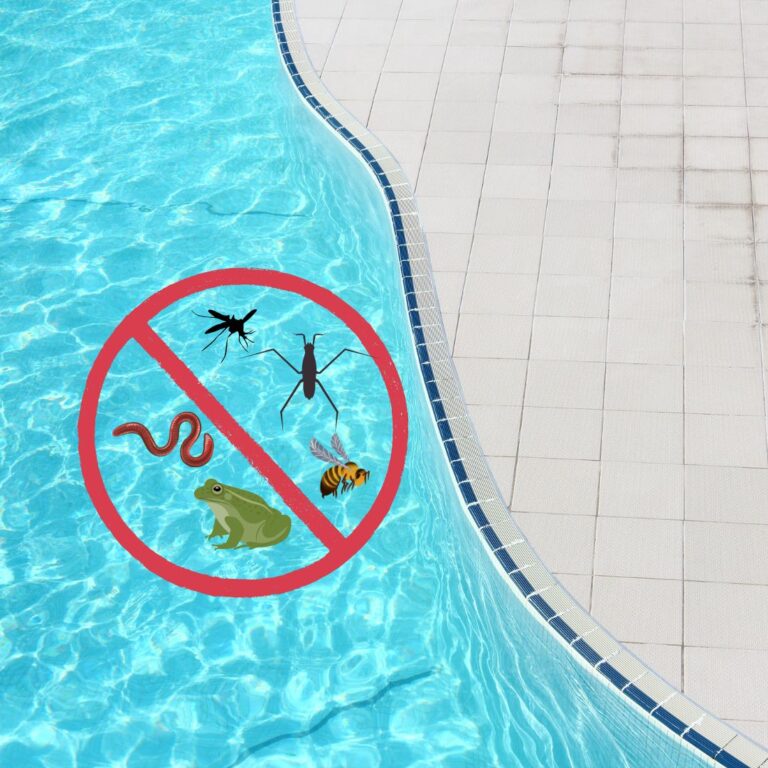Looking out of your window to a garden full of glistening snow is one of many perks of the colder seasons. But failing to prepare your garden for the icy conditions can leave you anxious for spring. There will be a ton of work waiting for you once the weather warms up, which could have been halved in the winter.
Tending to your backyard during the fall will save you a lot of money. Freezing temperatures can do significant damage to your lawn, plants, garden tools, hot tubs and swimming pools. In this article, we’ll walk you through four easy ways to winterize your backyard to save you from unexpected costs.
The 4 Best Ways to Prepare Your Backyard for Colder Weather
1. Prepare Your Lawn
Forgetting to lay the groundwork for your lawn for winter can produce a fungus that can grow in icy temperatures. Start by mowing the grass from early fall up until the ground freezes to reduce any lawn litter. The final cut should measure to the minimum height recommended for the variety of your chosen grass.
If you have any high traffic areas where grass has worn thin due to constant use, it is best to let the ground breathe. Aerate the compacted spots to create a better growing environment for grassroots. You should use this time to fertilize your lawn. Stop roots from rotting from the bitter winter weather with a mix of a low amount of nitrogen and more potassium.
As the weather begins to drop and the leaves fall, it is crucial to keep your lawn clear. While the autumnal colours may make your garden look pretty, fallen leaves smother your grass and prevent it from growing.
To ensure you have a healthy lawn, either rake the leaves to expose the grass to sunlight or mulch them for a healthier garden.
Finally, as the winter frost begins to set, it is essential that you keep off the grass. Hearing the crunch of frosty grass under our shoes is one of the best parts about winter but, it causes lots of damage to your lawn.
Each step could break the blades of grass, causing destruction to the grass crowns and making it more susceptible to diseases. Instead, wait to do odd jobs when the ground isn’t too wet and, if the snow falls, build snowmen on patios or hard ground.
2. Prune Plants
In the fall, cut back any plants that won’t survive the colder months.
Pull any seasonal garden plants out of the ground and toss them in your compost bin. By the time the temperature drops below freezing, you should have all your annuals removed and tossed into the compost. Plant any shrubs for winter at least six weeks before the ground freezes to give them time to grow.
Be sure to winterize any hardy bulbs, including roses, before the first heavy frost. Clean the ground around your roses and add a layer of fresh mulch or straw. However, it is best to wait until the ground has frozen if your backyard has suffered from a rodent problem.
Once you’ve winterized your buds, give the plant a good watering and add more mulch after each freeze to help them survive the winter chill.
If you keep any perennials in pots, you will need to give them extra protection as they won’t have much insulation from the cold. Put them in a sunny spot and cover them with mulch.
Similarly, bring any houseplants that you have kept outside during the summer months inside your home. Keep them near a window and, be sure to not overwater them as the colder weather provides extra moisture.
Once you’ve finished pruning your plants, it’s time to prep your compost for winter. After you’ve tossed all your seasonal garden plants and shrubs into the pile, you should add a little manure to speed up the process.
Turn the compost bin throughout winter to add air to the pile and help it to break down more quickly. Add a layer of straw or leaves to keep it insulated so your compost will continue to decompose.
3. Maintain Garden Tools
The cold winter weather can easily rust your tools. Preparing them for winter differs from tool to tool. However, if you clean them thoroughly, check for damages, sharpen and store them in a dry place. You can save yourself from annoying damages and spending money in the next season.
Begin by emptying any fuel from power tools like a lawnmower or tiller. Ideally, you should use up the fuel by giving your grass a final cut to prevent waste. Otherwise, you can simply drain the container.
Clean blades of debris and plants and soak handheld tools in warm water to loosen any soil. Scrub away any other dirt to prevent bacteria from building up. Then rinse and let your apparatus dry. Also, use this time to check the condition of your machines. If the blades are too blunt, it could be time to replace them.
Once you’ve decided the blades are intact, sharpen the tools in a single direction so they are ready for use in the spring. Use long, even strokes and follow the angle of the instrument for a clean cut.
Add oil to prevent your tools from rusting. Use tung or linseed oil to repel dirt and moisture from wooden handles. Vegetable oil is ideal for keeping the metallic parts of your gadgets from rusting away.
Choose a dry and well-ventilated place to store all your gardening tools, whether they are motorized or handheld. Avoid moisture by hanging them up or keeping them in a bucket full with a mixture of sand and oil. A barn, toolshed or toolbox is ideal for putting tools away for winter as air can circulate to prevent your gadgets from rotting.
4. Winterize Your Backyard Hot Tub
Sitting in a backyard hot tub and sipping delicious drinks while surrounded by snow sounds like a winter wonderland. It can become a reality with just a few winter hot tub preparations that will save your investment. First, you’ll need your user’s manual to read any error messages and warnings should they appear.
Switch your spa to its no-freeze mode, or its alternative, as soon as the temperature drops to keep your hot tub warm all day long. It will prevent any pipes from freezing over and damaging your spa.
It is crucial to keep your hot tub warm throughout the winter season, so ensure you keep the cover on at all times when you’re not using it. Investing in an insulated hard top cover and a cove cap will provide more protection by keeping snow and ice off your hot tub.
Check for any leaks and cracks by monitoring your water level to ensure it doesn’t get too low. The pumps can malfunction if the water level is too low and causes the water to freeze over. Make sure to tighten all connections and give your pumping system a good clean with a filter cleanse treatment.
If you do not plan to use your hot tub at all during the winter, you should drain and clean it. Not doing so could cause your hot tub to freeze, and the water lines and pumps will need to be replaced.
Prevent damage and unwanted costs in a few simple steps:
- Cut off all power to your backyard hot tub. Unplug the spa from the mains to prevent any electrical shock
- Remove the drain cap and empty the hot tub. Remember to dry out the remaining few inches of water at the bottom
- If your hot tub has an air blower, turn off the heater and start the blower. It will clear water from the lines. Loosen the unions or remove the drain plug to empty any water
- Remove and clean filters. Ideally, set the filters in a cleaning solution for 24 hours before storing them away for winter. Then dry out any remaining water in the filter
- Clean the shell and hot tub cover. Remove any scum with a bacterial cleanser to prevent any mould from growing over winter. Protect your cover with a cleanser that is also a protectant to shield it from harsh weather conditions
- Install the cover and lock it in place. It is a good idea to secure your hot tub with wind straps to prevent insects and rain from getting inside
- Planning to use your hot tub this winter? Utilize premium features such as the SmartTub® System to monitor the health of your spa and ensure it remains in working order.
You should also follow the steps to close down your swimming pool for the winter. It’s a similar process to winterizing a hot tub and can save you more work in the spring.
Boost Your Backyard with Sun Valley Pools & Spas
Does the idea of preparing your backyard for the colder seasons send a chill down your spine? Get in touch with us at Sun Valley Pools & Spas.
Our team of backyard leisure specialists located in the Duncan and Cowichan Valley area offer high-quality supplies, including water care products and pool maintenance services. Stop off at the showroom or give us a call at 250-748-9811 to schedule an appointment.





